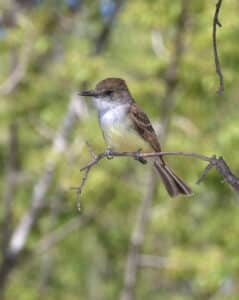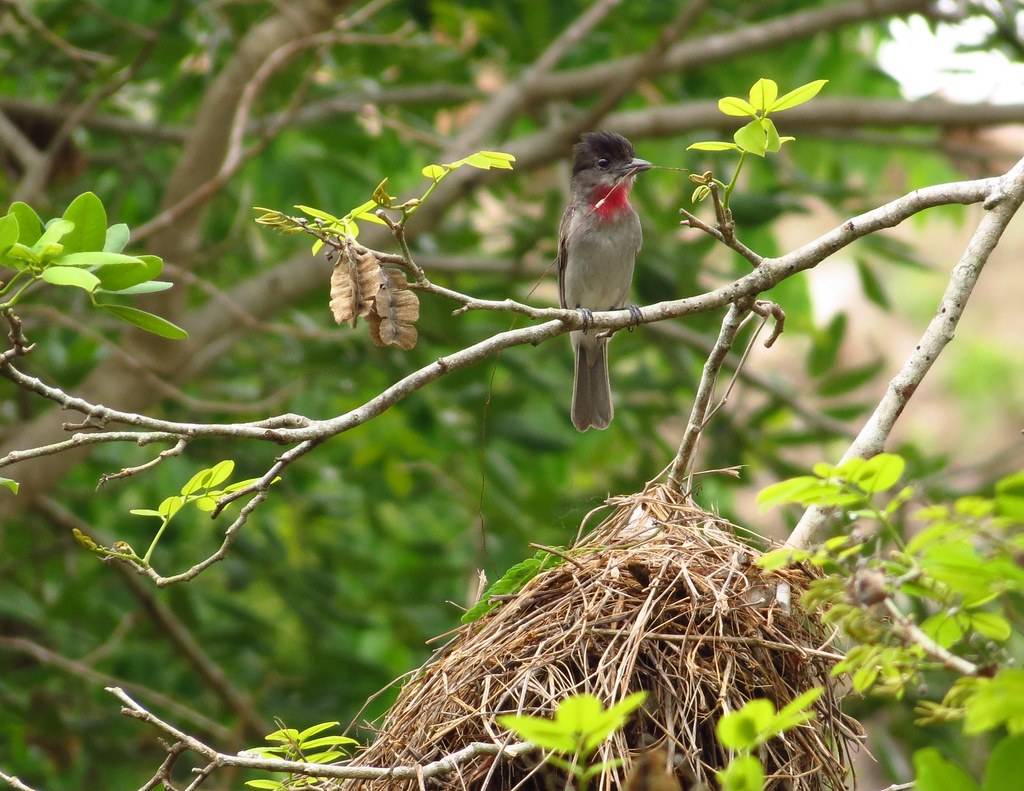
The Rio Grande Valley was treated to a rare visitor this week.
A Rose-throated Becard was spotted at Quinta Mazatlán on Tuesday, prompting a rare bird alert at the birding center.
John Brush, an urban ecologist who has been working at Quinta Mazatlán since he started part-time as a high school student in 2009, said that while the sighting of the rare bird has created buzz among birdwatchers, there is even more excitement over the fact that the center has had an above average number of rare birds spotted at the center in the last few months compared to recent years.
“We’ve had several other even rarer birds than the Rose-throated Becard that have been around for the past couple of months now,” Brush said.
Those rare visitors include two Crimson-collared Grosbeak spotted in November, two Blue Bunting, a Dusky-capped Flycatcher and a Pacific-slope Flycatcher, believed to be the first recorded sighting in Hidalgo County.
“This is a weird year where they’ve just been showing up in a lot of places around the Valley,” Brush said. “This latest rarity, so I guess rarity number five, is the Rose-throated Becard that showed up on Tuesday. We have at least one record of Rose-throated Becard here at Quinta Mazatlán, but the previous record was — I think only a few people got to see it and it was only around for a day or two, from my memory.”
Most of the birds are native to parts of Mexico, but the Rose-throated Becard can travel from as far away as Nicaragua.


The Valley is a hotspot for many different types of birds, both native and migratory, resulting in birdwatchers to flock to many of the Valley’s locations, including Quinta Mazatlán. Brush said that the center sees larger numbers of visitors during the months of October through March.
“Especially when you start to rack up the rare birds — it’s been almost non-stop,” Brush said. “Everyday there are quite a few birdwatchers that are coming into the park to look for some of these rarities. Because we’ve had so many rarities, a lot of times they’re coming back for several days to try to see. They might’ve seen the Crimson-collared Grosbeak for instance, but they dipped — that’s the way the birders say they missed out — on seeing the Blue Bunting or the Rose-throated Becard. So they’ll come back the next day and search for it again.”
“It really kind of builds on itself,” Brush continued. “When you see that first rare bird in the park and there’s photos, and it seems like it’s sticking around, more and more birdwatchers come to the park. And then they find more cool things sometimes, and it just kind of snowballs into this like birdwatching frenzy kind of where there’s just tons of birds being seen around the park and there’s lots of birdwatchers spreading the word about it.”
Brush said that the pandemic has done little to quell the excitement around the rare birds in the area, and he said that Quinta Mazatlán provides the perfect opportunity to seek out the birds in a safe, socially distanced way.
“We are pretty much — the vast majority of the park is outdoors,” Brush said. “You will only briefly have to go inside. There’s a fiberglass separator, as you’ve seen in so many grocery stores and whatnot. Inside, you are required to wear a mask, so anyone who enters the building needs to have a mask on. Other than that you are outside on the trails and able to keep good distances from other people.”
Quinta Mazatlán has maintained its regular business hours, Tuesday through Friday from 8 a.m. to 5 p.m. The facility remains open until 6 p.m. on Thursdays. Anyone interested in seeking out the rare birds can attain information at the front desk including where the birds have been seen recently and what time of day.
“No advanced registration needed because it’s mostly outdoors on the trails anyways,” Brush said. “People can just walk right up and pay their admission, and enjoy however long they want to spend in our beautiful urban forest.”




